
September 16th, 2020 marked the 10th annual #AskACurator day on social media, where museums, galleries, and libraries across the world invite the public to ask questions about our collections, the role of the Curator, and about museums in general.
Our audience submitted fascinating questions, from “which canoe are you most proud of?” to” why are the ropes at the end of a canoe called painter’s lines?”. Our Curator, Jeremy, and Associate Curator, Beth, had a great time answering questions and digging deep into their knowledge of the museum and collection. We’ve rounded up the responses on our blog for all to read!
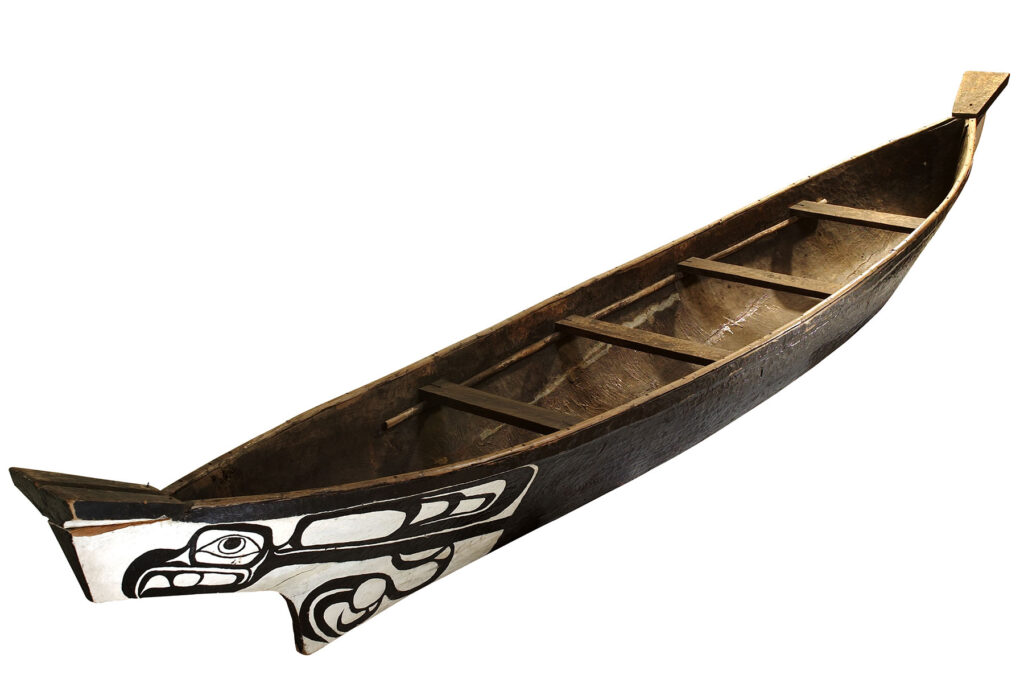
Which canoe in your collection are you most proud of?
Submitted by @fuzzy_images
The one I’m most proud of is a dugout canoe made by the late Haida carver Victor Adams, completed in 1971 for the predecessor of the Canadian Canoe Museum (the Kanawa Museum by the founder of our collection, Kirk Wipper).
I had the opportunity last September to visit and meet with Adams’ wonderful family (including his daughter Alice, pictured) and the communities connected with him on Haida Gwaii, and to learn and to share. We hope to resume this relationship and work once the challenges of the pandemic are no longer the key priority.
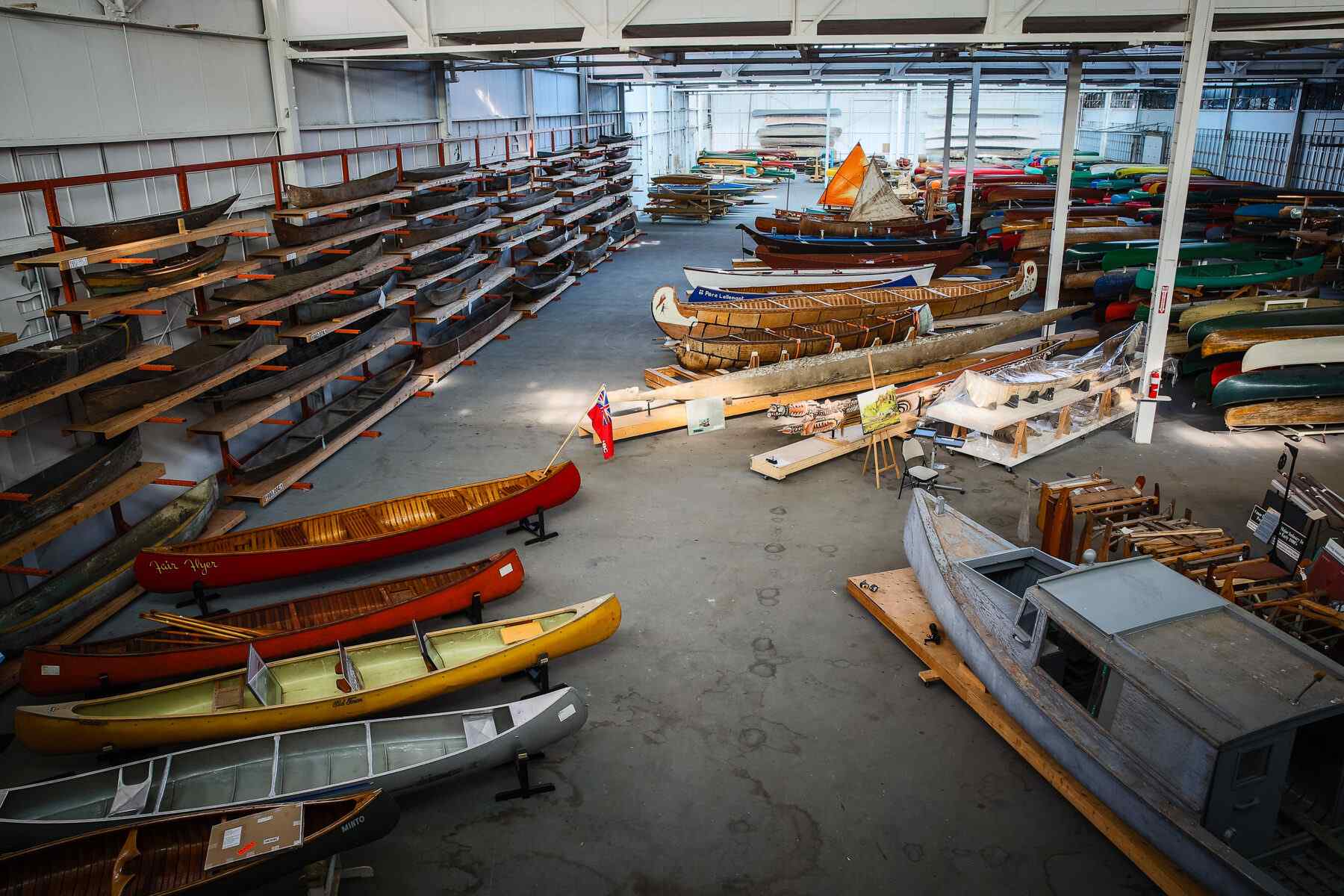
What is the fully loaded annual cost for the museum to take on another typical 18-foot long canoe? Is the cost the same on a cubic foot basis for related ephemera (i.e. catalogs, postcards, photographs, factory records, etc.)? How do you decide which new artifacts to accept?
Submitted by Benson Gray
We don’t actually have a calculation to share for the carrying costs of a single canoe, whether in storage or on exhibit, but that would be an interesting number to know (if difficult to figure out, unless we just divided our annual budget by the number of canoes in the collection…)!
While many of our canoes are stored in a non-climate controlled warehouse adjacent to the museum (as shown in the photo), our archival collections are of course kept within a controlled environment in our museum.
Typically, decisions to accept or decline (with thanks) artifact offers are determined by our museum’s Collections Committee. Offers are first studied by the museum’s curatorial team to assemble a briefing package with support from the intended donor to best understand its provenance, current condition, restoration history, conservation and care considerations, interpretive value and also whether it fills gaps in our collections planning.
With more than 600 canoes and kayaks in our collection, the museum typically acquires only a few new objects each year!
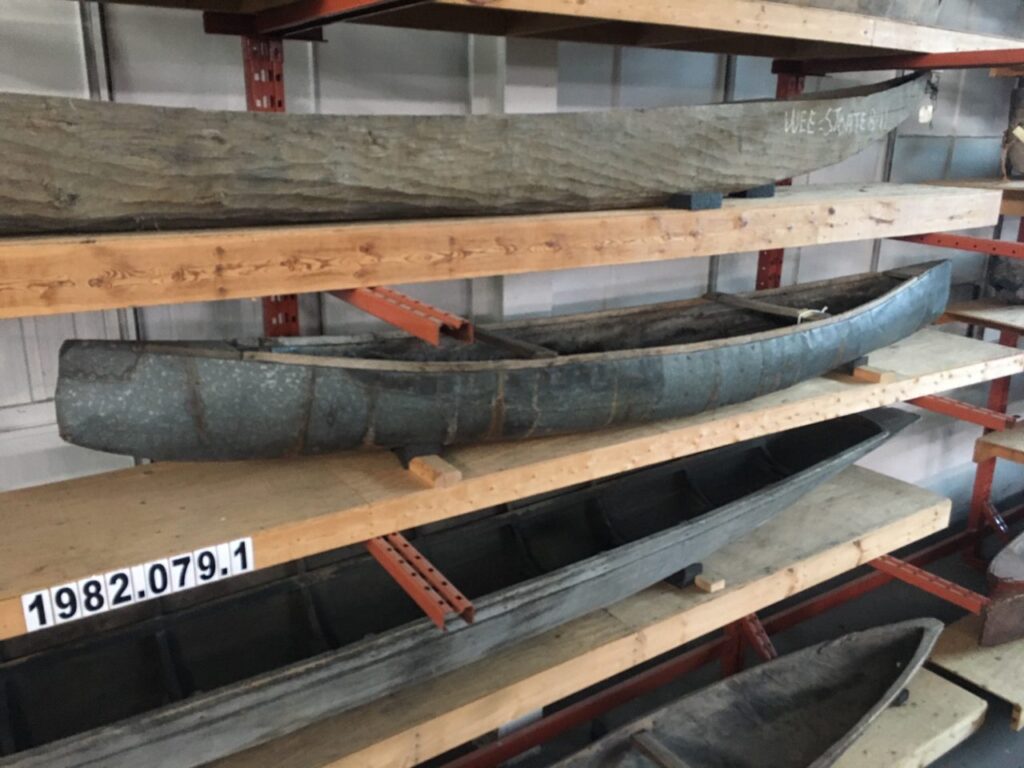
Is there an unsung artifact in the collection that you feel like you’re the only one to really appreciate it? Why are you drawn to it?
Submitted anonymously
We have so many wonderful pieces in our collection that my answer could change daily! One that comes to mind is a small, pine dugout from Ontario (second canoe on the rack) with surprisingly elegant lines that has had its battered and cracked hull repaired countless times with forged iron fastenings, and its seams packed with caulking.
At a later point in the canoe’s career, its owner carefully stretched and soldered panels of sheet metal over the outside of the hull. The result is rugged but beautiful in execution.
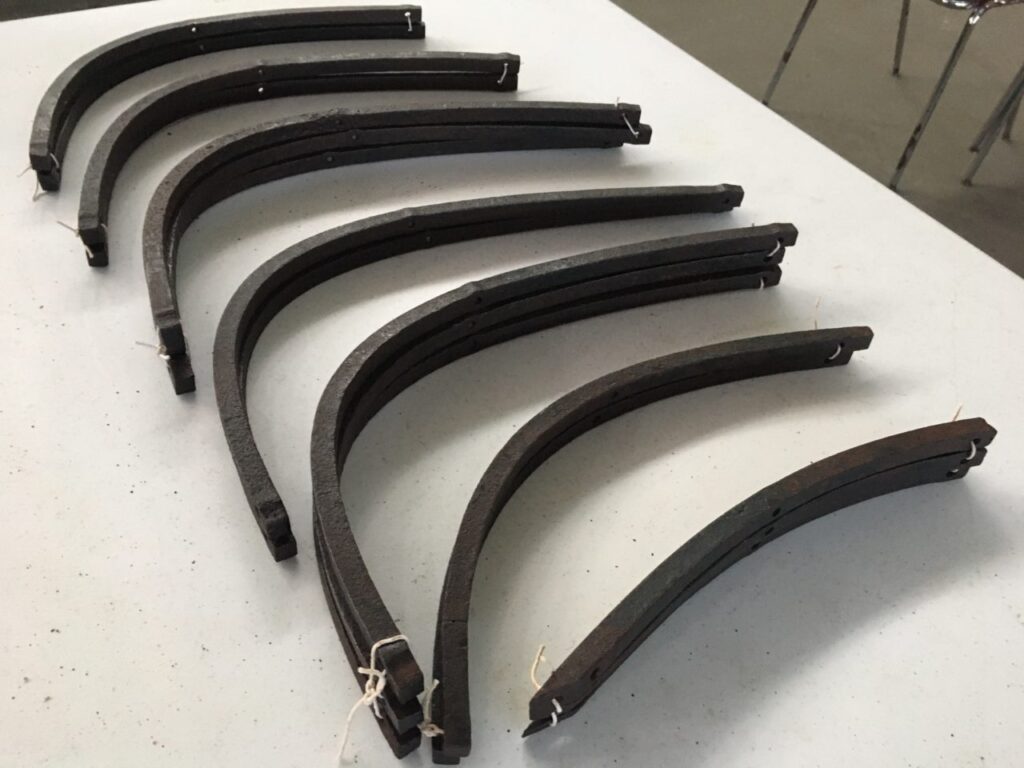
What are the metal frames in the warehouse that appear to go together like a form but with no explanation?
Submitted by Andre Cloutier
If I am correct, this question refers to a large collection of precisely-forged, curved pieces of iron that describe the curved, cross-sections of a canoe’s hull. They would likely have been assembled along a longitudinal spine to create the skeleton of a canoe making form. The exact manner of their assembly and use has not been fully understood.
These pieces were donated by Phil Rye of Peterborough, and once belonged to his grandfather Harold B. Rye, boat builder and paddle manufacturer. They were also accompanied by some of the cutter components from Rye’s paddle-making machine.
I understand that this question might have come from canoe maker and enthusiast Andre Cloutier. The CCM team would be interested in gathering a team of canoe makers familiar with turn-of-the-century techniques to better understand the use of these iron components. If you can share any information, please get in touch!
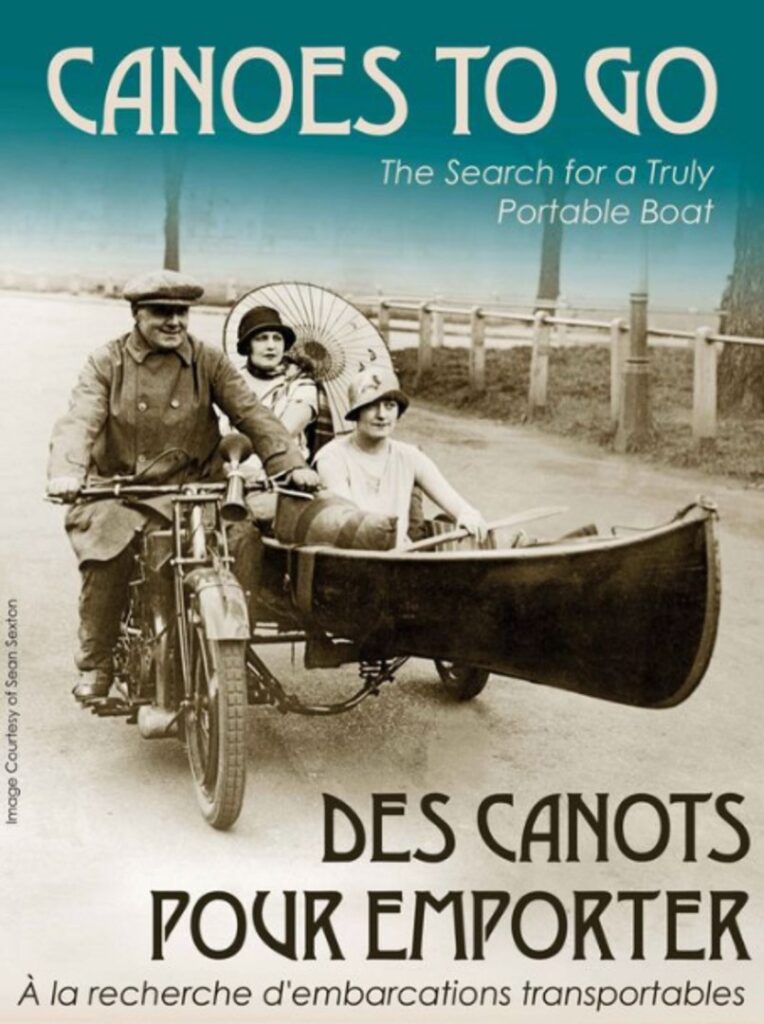
What is your favourite exhibit that you’ve ever worked on?
Submitted by Liz Watkins
In 2012 we made a temporary exhibit called Canoes to Go: The Search for a Truly Portable Boat. For this exhibit, we gathered together canoes in our collection that collapse, come apart, deflate, and become more portable. It was really interactive and contained many hands-on elements that were so much fun to create!
Our Curator and a team of volunteers made a replica of a folding canoe so visitors could try it out themselves. We also made a replica of an inflatable ‘boat cloak’ complete with the cane that morphs into a paddle.
Advanced Elements donated one of their modern inflatable canoes to the museum so we could make a magnetic fishing area for kids to catch fish species that are native to Canadian waters. It was so much fun to research and create these hands-on elements, then to see visitors enjoy trying them out as much as we enjoyed putting them together! – BETH, Associate Curator

Why are the ropes tied to the end of canoes called painter lines? (submitted by @madawaskakanu)
Submitted by @madawaskakanu
Like gunwale, tumblehome and other wonderful canoe words, the word painter was transferred to canoes from nautical use for a line used to secure or tow a boat (Merriam-Webster) or other practical uses on deck. Its etymological origins draw from Middle English ‘paynter” and Middle French “pendoir” suggesting it applied to a line used to suspend an object!
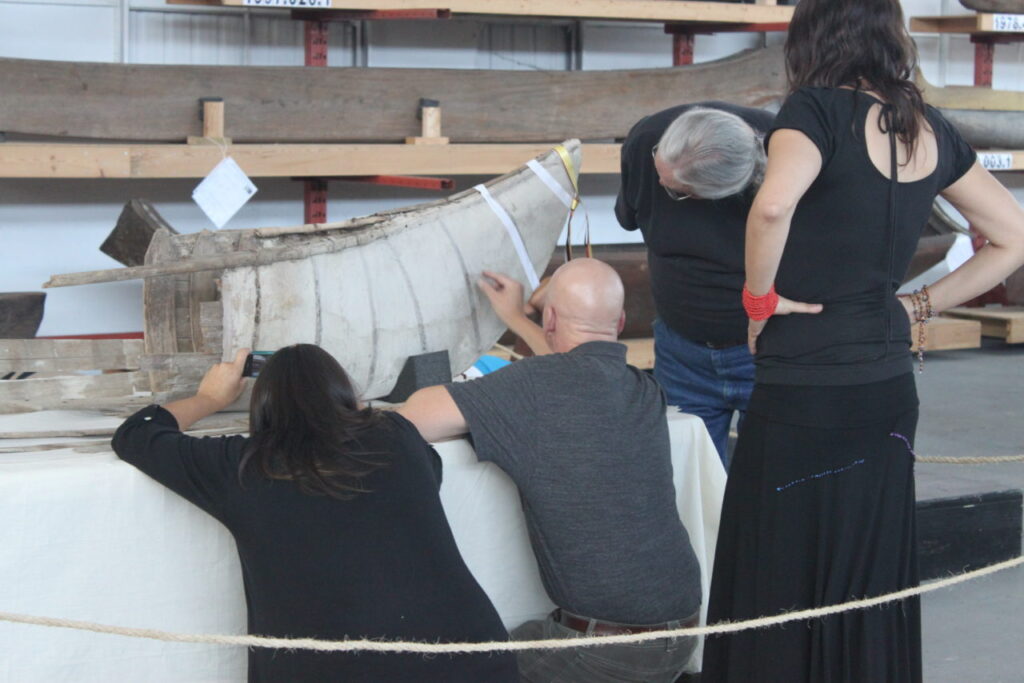
What is the oldest canoe in the collection? Submitted by Madison More
Submitted by Madison More
An 18th-century birch bark canoe, likely from the St. Lawrence River Region. This canoe of yet-to-be-identified Indigenous community origins was taken to England following the American Revolution and it remained at a family estate until 2012, when it was gifted to The Canadian Canoe Museum and returned to Canada after 230 years.
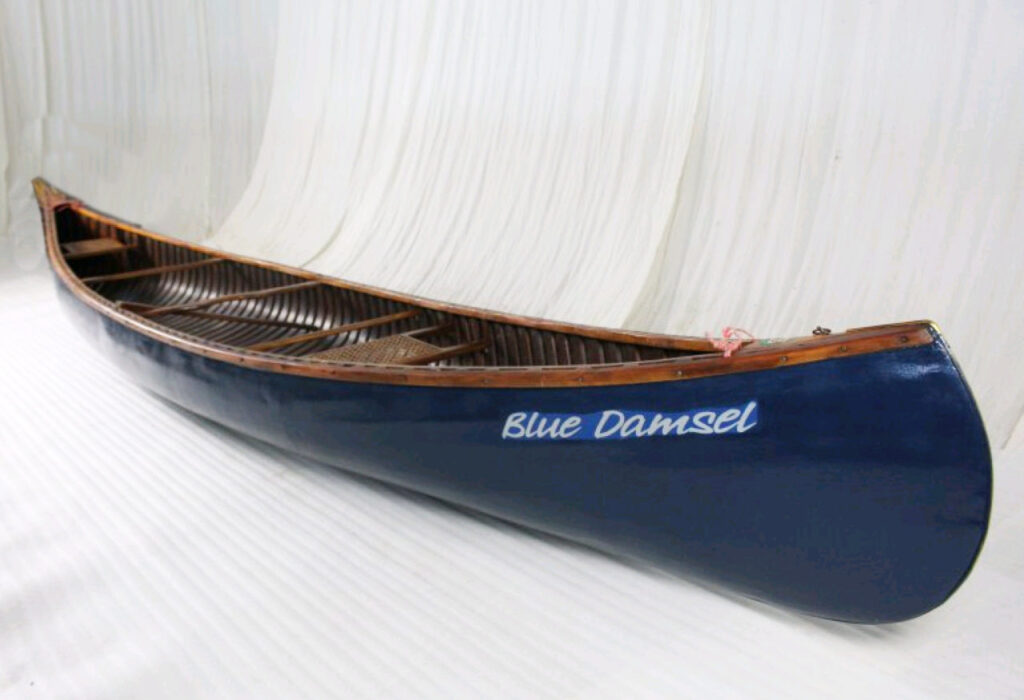
What is your favourite canoe in the collection?
Submitted by @AshleyPTBO
Oh wow, it changes all the time, frankly!
One of my favourites includes a surprisingly elegant early 20th century 18-foot Chestnut Guide model canoe named Blue Damsel. It was originally used for timber cruising in Quebec and it still bears the scars pitted into its floors from the hobnailed boots of its crew!
We hope you enjoyed finding out the answers to your questions as much as we did! We look forward to participating again next year. Until then, be sure to check out our Facebook, Twitter and Instagram channels for more behind-the-scenes content!






